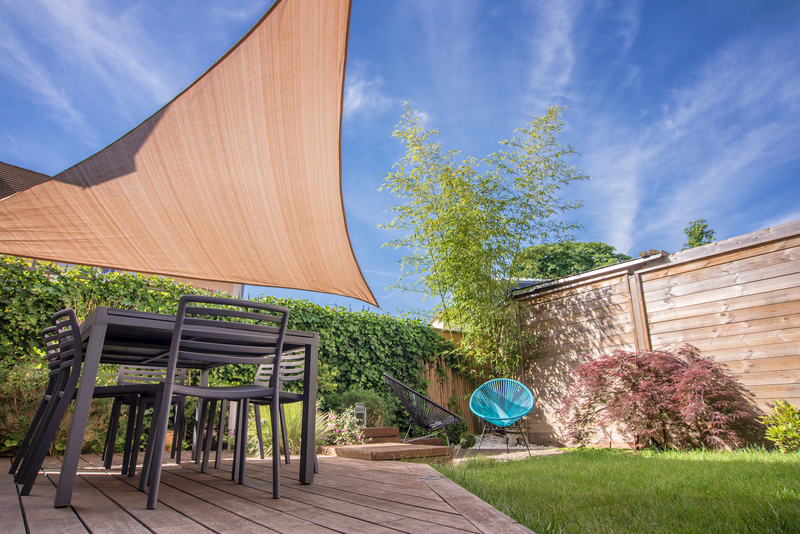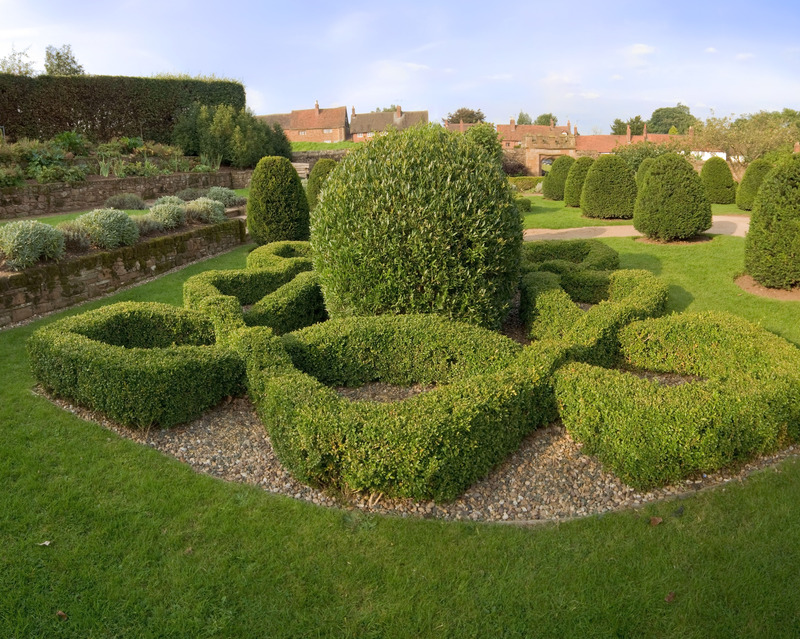How to Build a Garden that Engages and Delights Your Kids
Posted on 08/09/2025
How to Build a Garden that Engages and Delights Your Kids: A Complete Guide
Are you dreaming of creating a kid-friendly garden that's as delightful as it is educational? A garden designed for children not only invites adventure and creativity but also fosters lifelong connections with nature. In this comprehensive guide, you'll discover step-by-step tips and inspiring ideas on how to build a garden that will engage and delight your kids. Whether you're starting from scratch or looking to transform your existing yard, our expert advice will help you create an outdoor space that your kids will cherish for years.
Why Create a Child-Friendly Garden?
Children are natural explorers, and the outdoors offers endless possibilities for learning and fun. Gardening with kids provides hands-on education in biology, sustainability, and responsibility. Plus, it's a wonderful way to bond as a family and encourage a healthy, active lifestyle.
- Stimulates creativity and curiosity
- Builds responsibility through plant care
- Promotes physical activity and sensory experiences
- Improves mental well-being and focus
- Teaches about nature, food, and life cycles

Step 1: Involve Your Kids in the Planning Process
The journey to an engaging children's garden starts long before you plant the first seed. Involving your children in the planning stage empowers them and gives a sense of ownership.
How To Get Kids Excited About Gardening
- Ask for their input: Sit down with your child and brainstorm garden ideas together.
- Let them choose themes: Whether it's a fairy garden, a dinosaur park, or a colorful vegetable patch, letting kids pick a theme enhances enthusiasm.
- Plan together: Draw a simple map or sketch of the garden area. Mark where different plants or features will go.
Step 2: Choose a Safe and Accessible Location
When creating a garden for children, safety is the top priority. Pick a visible area that's easy for adults to supervise and for children to access.
Key Features of a Kid-Friendly Garden Site
- Level ground: Reduce trip hazards and make play easier.
- Good sunlight: Most plants, especially vegetables and flowers, need at least 6 hours of sunlight daily.
- Accessible water source: Make it simple for kids to water their plants independently.
- Shelter/shade: Provide relief from hot sun with trees, trellises, or shade sails.
- Fencing or natural barriers: Keep children safe from streets or other hazards while keeping critters out.
Step 3: Select the Best Plants for Kids
Choosing child-friendly plants is key. Look for varieties that are:
- Non-toxic: Only plant flowers, fruits, and vegetables that are safe if touched or tasted.
- Fast-growing: Kids are more likely to stay engaged if they can see quick results.
- Colorful and fragrant: Sensory plants add to the fun by providing colors, scents, and textures.
- Easy to harvest or interact with: Snap peas, cherry tomatoes, sunflowers, and carrots are fantastic picks.
Top 10 Plants That Entice and Educate Kids
- Sunflowers - Tall, fast-growing, and perfect for measuring height
- Strawberries - Sweet, red, and irresistible to children
- Snap peas - Fun to pick and eat straight from the vine
- Pumpkins - Great for watching grow and for autumn crafts
- Carrots - A surprise harvest underground
- Lavender - Invites bees and offers calming fragrance
- Nasturtiums - Edible, peppery leaves and bright blooms
- Mint - Hardy and perfect for sensory exploration
- Cherry tomatoes - Bite-sized and delicious
- Butterfly bush - Attracts pollinators and adds excitement
Step 4: Design Interactive and Playful Spaces
A garden for kids should be more than just plants. Incorporate interactive features and play areas to keep children engaged.
Fun Garden Elements for Kids
- Raised beds or container gardens: Easier for smaller children to reach and manage.
- Stepping stones: Create playful pathways through the garden.
- Secret hiding spots: Use tall sunflowers, bean teepees, or willow tunnels for imaginative play.
- Fairy or dinosaur gardens: Miniature landscapes with toys or figurines inspire storytelling.
- Chalkboard or art wall: Encourage creativity with a DIY outdoor chalkboard.
- Sandpit or digging zone: Set aside a safe area where kids can dig freely.
- Water play: Incorporate a bird bath, shallow pond, or water table.
Step 5: Encourage Wildlife and Nature Exploration
A nature-rich garden can become a living lesson in ecology for children. Attracting butterflies, bees, birds, and beneficial insects sparks curiosity and helps children appreciate local wildlife.
Easy Ways to Attract Wildlife
- Plant pollinator-friendly flowers: Lavender, marigolds, and milkweed attract butterflies and bees.
- Install bird feeders or birdhouses: Watch and identify visiting birds together.
- Build a bug hotel: Stack sticks, pinecones, and bamboo in a sheltered corner for beneficial insects.
- Add a butterfly puddling station: Shallow dishes with wet sand provide a drinking spot for butterflies.
Regular observation and nature journaling can turn your engaging kids' garden into a laboratory for fun science discoveries.
Step 6: Teach Responsibility with Age-Appropriate Gardening Tasks
Gardening is a fantastic way to teach kids valuable life skills. Assign simple, age-appropriate garden chores for consistent engagement and learning.
Sample Garden Tasks by Age Group
- Preschoolers (2-5 years): Watering with a small can, filling birdbaths, collecting petals.
- Early elementary (6-8 years): Planting seeds, gentle weeding, harvesting herbs.
- Older kids (9+ years): Building raised beds, designing garden markers, leading watering or compost routines.
Make chores fun with colorful tools, garden gloves, and aprons sized for children. Encourage them to decorate plant markers or track growth in a journal.
Step 7: Incorporate Learning Opportunities
A children's garden is full of teachable moments. Use gardening as a springboard for lessons in science, math, nutrition, and art.
Educational Garden Project Ideas
- Growing a pizza garden: Plant tomatoes, basil, peppers, and oregano--then cook a pizza together.
- Measuring plant growth: Track and graph the height of sunflowers or bean vines.
- Composting: Teach about recycling with a worm bin or simple compost pile.
- Harvest-to-table cooking: Use garden produce in easy recipes.
- Nature-inspired crafts: Paint rocks, make leaf rubbings, or press flowers.
Step 8: Keep Maintenance Simple and Fun
Focus on easy-care plants and practical layouts to keep the maintenance manageable. Mulch paths, use automatic watering systems, and keep pathways wide enough for little feet (or wheels).
- Low-maintenance plants: Marigolds, calendula, mint, and zucchini
- Group plants by watering needs: Simplifies caring for the garden.
- Set up a weekly garden routine: Build excitement with regular "garden days."
Step 9: Celebrate Success and Seasonal Changes
Don't forget to celebrate the garden's milestones! Host seasonal festivities--spring planting parties, summer picnics, or autumn harvest festivals--to mark your child's achievements and the changes in the garden.
- Take photos as plants and kids grow
- Make a scrapbook or journal of garden adventures
- Share garden produce with neighbors or family
- Plan crafts and cook seasonal recipes from the garden
Common Pitfalls and How to Avoid Them
- Over-planning: Keep it simple and flexible, so kids don't lose interest.
- Garden hazards: Avoid sharp tools, thorny plants, and chemical fertilizers or pesticides.
- Too little or too much responsibility: Assign jobs that are developmentally appropriate.
- Inaccessible design: Make sure growing beds are within reach of kids and pathways aren't blocked.

Frequently Asked Questions
How do I keep my kids interested in the garden?
Keep experiences fresh by changing up tasks, planting different crops each season, mixing in crafts, and celebrating harvests.
Are there plants that are unsafe for children?
Yes, avoid toxic plants like foxglove, oleander, and some types of lily. Always research before planting anything new.
How much time do I need for a children's garden?
With simple layouts and low-maintenance plants, you can keep garden care to a couple of hours a week. More time together yields greater rewards!
Is it possible to build a garden for kids in a small space?
Absolutely! Container gardens, vertical gardens, and fairy gardens work beautifully on patios, balconies, or even windowsills.
Conclusion: The Lasting Value of a Kid-Centered Garden
Creating a garden that engages and delights your kids is one of the greatest gifts you can give as a parent or educator. You're not just growing vegetables or flowers--you're nurturing curiosity, confidence, and a sense of wonder about the natural world.
Whether your garden is big or small, simple or magical, the memories and skills your children build here will last a lifetime. Start your kid-friendly gardening adventure today, and watch your whole family blossom!

